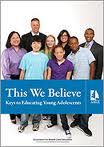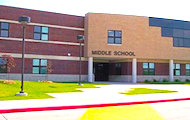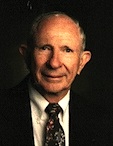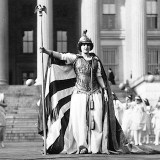Thank You, Public Schools
As Middle Level Education Month draws to a close, we’re pleased to share this reflection by MiddleWeb friend and contributor Bill Ivey, acknowledging the debt private schools owe to the thousands of public educators who helped forge the “middle school model” that serves many of today’s young adolescents in both public and independent school settings. Bill is Middle School Dean at the all-girls Stoneleigh-Burnham School in Massachusetts.
Peter Gow, a college counselor at Beaver Country Day School and longtime virtual friend of mine, has recently been invited to write a regular blog for EdWeek.org with an intriguing theme. Called “Independent Schools, Common Perspectives,” it is designed to explore the worlds of independent and public education and how they can strengthen each other. A refreshing concept and worthy goal.
In an entry entitled “Middle Schools: A Gift From the Public Education System,” he looks back to his own years in what those of us in independent education used to call “Junior Schools.” Those were the days when “independent schools were falling all over each other to turn their middle grades–five through eight, roughly–into middle schools.” Peter shares his own warm memories of working in middle schools, and, as the title implies, he explores the role of public schools in developing and promoting what has come to be known as the middle school model.
Deep public roots
The middle school model has its deepest roots in the junior high movement way back around the turn of the 19th to 20th centuries. At that point in time, the idea took hold that young adolescents had unique developmental needs distinct from high school students.
Charles Eliot proposed specific reforms in 1888, though it wasn’t until 1909 that the Indiana Junior High School in Columbus OH became the first school to formally use the term. Most often, the junior high model is thought of as being essentially “a little high school” with discipline-specific courses offered by different teachers from different departments, delivered at a pace and level of intellectual challenge deemed appropriate for younger students.
John Lounsbury, who wrote the paper from which I just paraphrased, is often considered as one of the godfathers of the middle school movement in the United States. Lounsbury had already begun working to reform the junior high model when William Alexander, in a speech in 1963, first used the term “middle school.”
Soon after Alexander’s speech, Dr. Lounsbury has commented, the term “was picked up and became the focus, and so my renaissance of the junior high school was no longer needed, because now we had the middle school as the rallying point—as the talking point. It gave us this fresh start, because we weren’t going to change the junior high, so long as it was stuck with that label.” (Lounsbury, quoted in Gloer)
John Lounsbury was one of the earliest leaders of the National Middle School Association, now called the Association for Middle Level Education (AMLE) and few educators (if any) have played as great a role in defining and refining a bold and unequivocal vision for what middle schools could and should be.
The middle school vision
What defines the middle school model? Essentially, the middle school model comprises a holistic focus on the developmental needs of young adolescents, seeking out connections both among different disciplines and among different members of what is often described as “a learning community” – students and teachers, of course, but also parents and the larger community.

As Peter Gow notes in his blog, we independent middle school educators have found that “Our models came overwhelmingly from public schools” and thus that “one of the great developments in American education, one that thankfully changed the lives of tweens permanently, was, at least in my experience, a window into the amazing work that public schools and their teachers were doing to change kids’ lives.”
He goes on to point out that “this makes all the sadder the distractions that now seem to keep so many of our brothers and sisters in public schools from evangelizing even more transformative programs for their (and potentially our) students. It makes me respect all the more the passion and creativity of teachers who continue to come up with new and better ways to help kids learn and grow, even in the face of corrosive factors over which they have little control.”
Forging forward in corrosive times
Among those corrosive factors is the current push to close schools. The well-known and well-respected blogger Jersey Jazzman recently published a piece entitled “School Closings: The New Apartheid” which lists in depressing detail many examples of systems that are closing schools in a manner that disproportionately affects children of color. Chicago, setting a new record with plans to close no less than 61 schools (9% of the current total) leads the list. He quotes Karen Lewis, the head of the Chicago Teachers Union, as pointing out that “88% of the students impacted by CPS School Actions are African-American.” Though school closings were perhaps an inevitable and tragic result of NCLB, the deeper tragedy of the racist patterns of these closings was not.
That said, public schools are indeed forging forward. A former Arkansas state teacher of the year, Justin Minkel, recently published a guest blog post at Edweek.org entitled “What’s Right with Our Schools?” The short answer: a lot.

As Peter Gow put it, “brothers and sisters, we’re still ready to learn from you.”
Bill Ivey is Middle School Dean at all-girl Stoneleigh-Burnham School in Greenfield MA, where he also teaches Humanities 7, French, and the Middle and Upper School Rock Bands. Bill is the advisor for MOCA, the middle school student government, and he coordinates and participates in the middle school service program. Bill’s other MiddleWeb posts include Hungering for a Better World and Actually, You ARE Special.





































1 Response
[…] (continue reading) […]